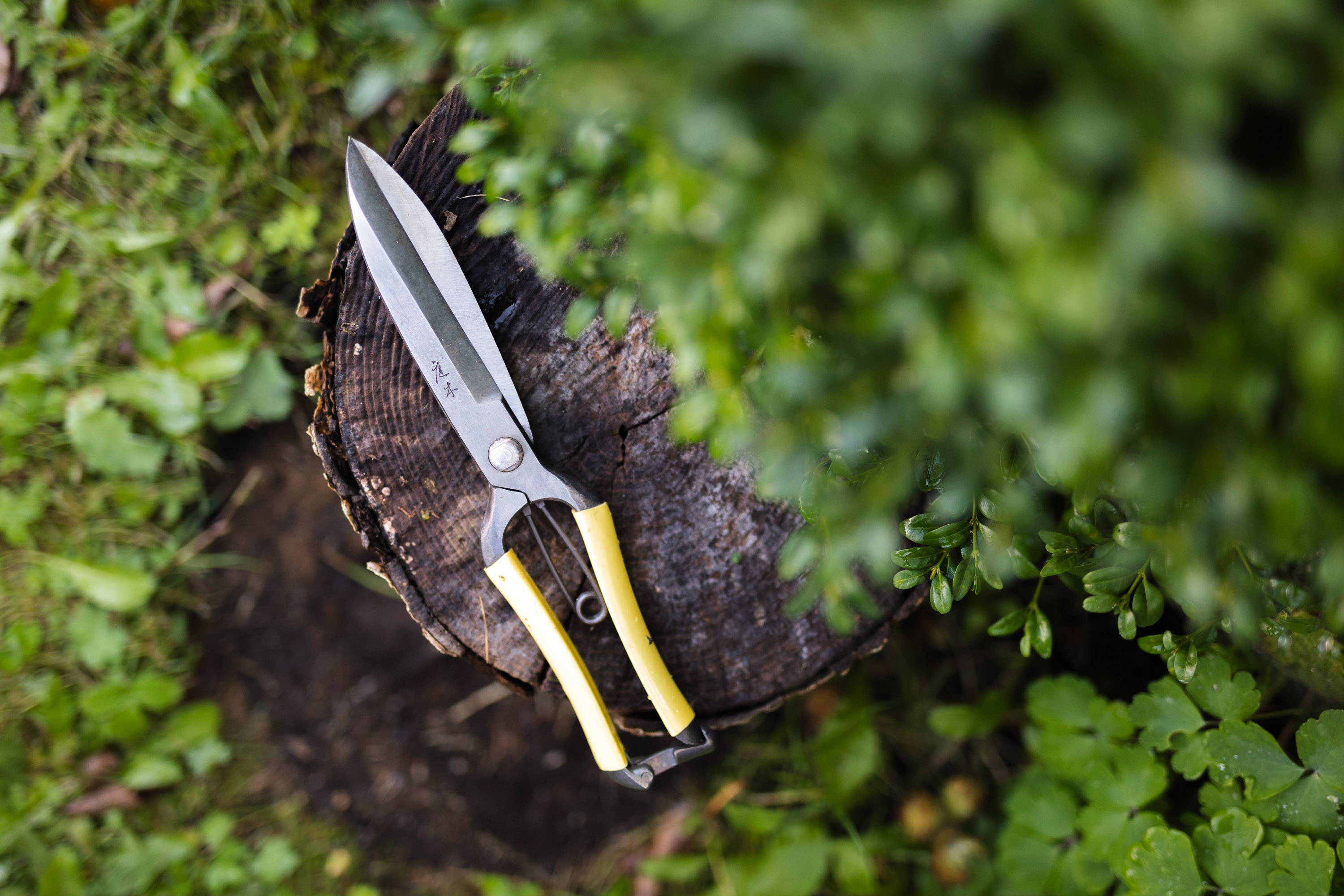
Jake Hobson
In Conversation
Jake grew up in Hampshire, in southern England, surrounded by beech trees and bluebell woods. He’s always loved woodlands and trees and has long been interested in the human relationship with the natural world. When he was fresh out of university, he headed to Japan, lured by the cherry blossom season, Hanami. There, he began an undulating journey that saw him training as a TEFL teacher, meeting Keiko, his Japanese wife, teaching English in Japan and spending two years working at a traditional plant nursery in rural Osaka, learning about tree training, pruning and root-balling. Eventually, this journey led him to founding Niwaki, a company selling “Great Stuff from Japan” for the garden, kitchen, shed and woods. The company began, humbly, when Jake returned to England. His brother-in-law Haruyasu shipped over a couple of Japanese tripod ladders, some secateurs and topiary clippers. His tools were the envy of his peers. And so a business idea formed. Today, the company prides itself on quality and Japanese provenance, working with Japanese craftspeople to create their tools and wares.
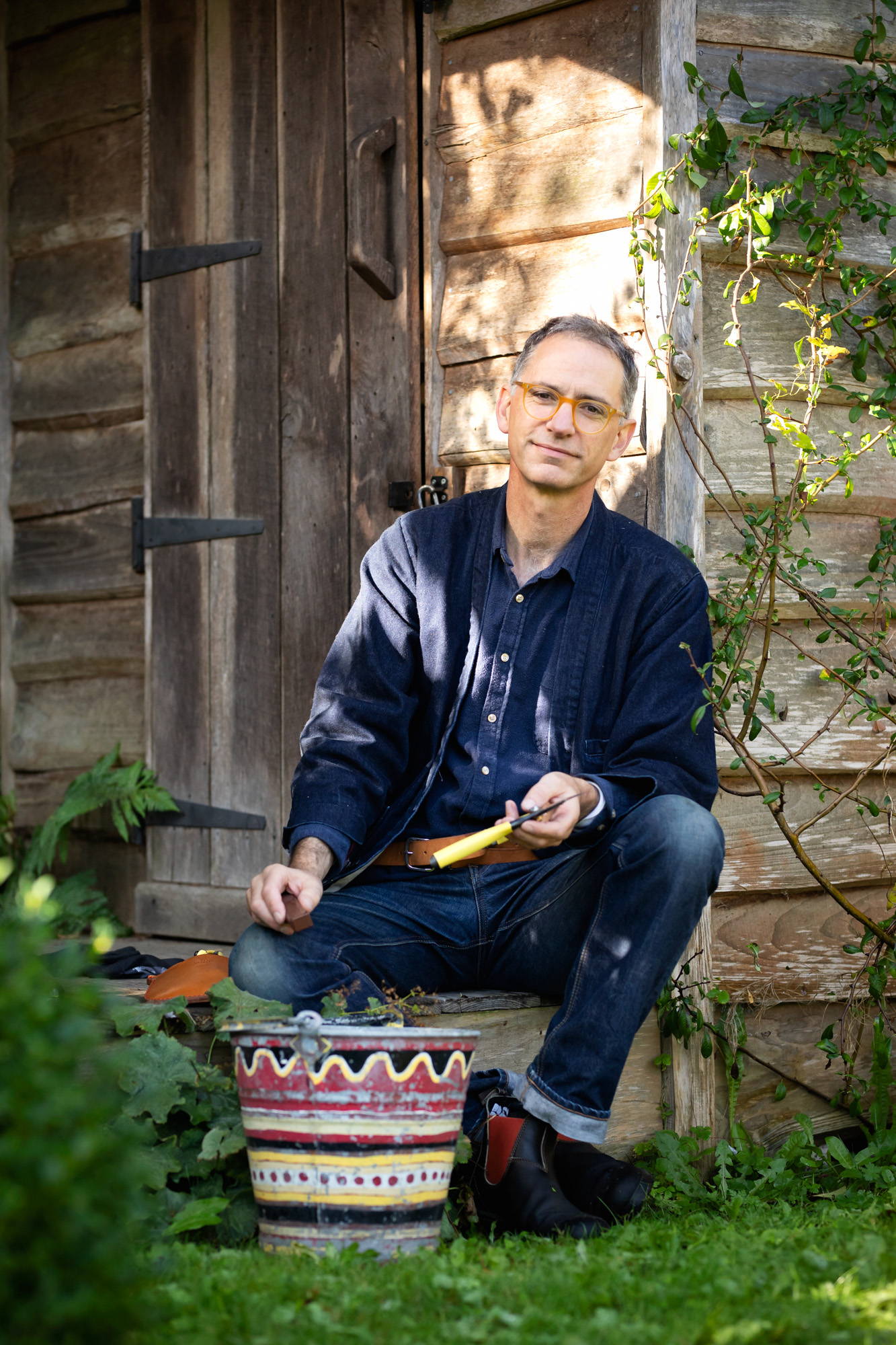
“Every plant is different, and it’s about learning over time, because everything takes time. That’s gardening in general. But pruning in particular is a slow process. But I love it. It’s all about slowing down and being open to learning.”

How did you become interested in gardening?
I don’t really consider myself a gardener. I don’t like getting on the ground and planting and weeding and doing a lot of the things people associate with gardening, and I’ve deliberately not learnt a lot about general horticulture. I can’t walk into a garden centre and tell you what species are what. But, I can walk through a forest and tell you what every tree is and why they grow together. I know about trees, and I know about how plants grow. And that stems from being in Japan.
After studying sculpture in London, I went to Japan to investigate the Japanese people’s relationship with nature and the environment around them. I had heard about cherry blossom being an important part of their lives, and I was intrigued by that, so I went out to see the cherry blossom bloom. But I got there too early, so I had a few weeks to explore the country and the landscapes there. That’s when I discovered the gardens.
I was in my early twenties, so gardening wasn’t at all on my radar – like most people that age, it wasn’t part of my life. But I really liked the gardens there because they didn’t look like what a garden was at home in England, with flowers and roses and such. Instead, they were these landscapes and microcosms of nature. They were mountains and rivers and rocks and trees and waterfalls. They were all the stuff I liked, which was messing about in the woods and exploring in the mountains and walking in nature. The gardens represented and referenced real landscapes in Japan. That’s how I got into gardens: through Japanese gardens.


Niwaki Garden Scissors. View Wood & Meadow’s Niwaki Collection.

That’s incredible that the Japanese create microcosms of nature in their gardens.
Yeah. The Japanese are very good at using small elements and features to evoke the feeling of being out in the mountains. That may simply be a rock or a tree or a branch, but it takes you back to a place out in the landscape – it’s a switch, a signal, a green light to be there again, and that maybe through conjuring up a memory or a smell or an emotion. Of course, though, you have to have had the experience of the mountains in the first place, otherwise that rock, tree or branch is just a rock, tree or branch. Even now, as I explore the country more, I continue to better understand why they include certain features in their gardens.
Why do the Japanese design gardens to mirror a natural landscape?
Everyone has different opinions. Largely, it’s thought to be because of their religion, their isolation, their geography and the way the islands are shaped with mountains and rivers. They were very isolated throughout their history of garden-making so weren’t open to Western ideas of gardening. There are lots of reasons. And I have my own very naive, idealised ideas around it, yet you’ll find different books and different historians say different things.


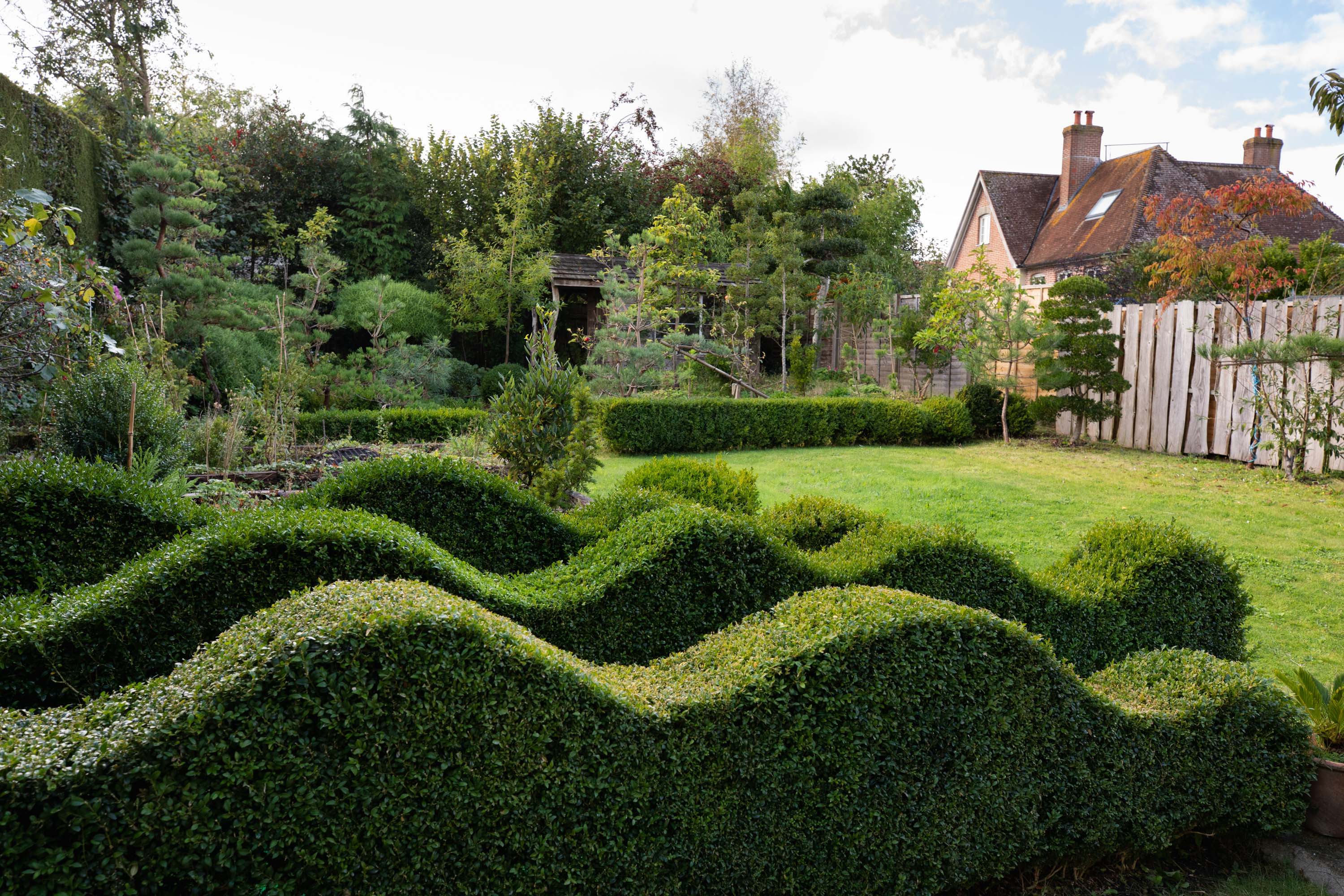
Jake's garden.
Have you created a landscape in your own garden like the Japanese do?
Yeah, but it’s a pretty weird landscape. It’s full of trees and has a lot crammed into it. It’s not a Japanese garden, but it was created with the same principles as a Japanese garden and the intentions are very Japanese. I no longer plant in my garden – the only changes I am making are above ground and pruning. I usually do an early summer clipping and then another late summer. And so what if I don’t do it for a year. There aren’t any rules. I’m incredibly laid back about it all.
Do you see your garden as a refuge?
Definitely – it’s definitely a refuge. I may come back in the evening and have a cup of tea or a beer out there or lie on the grass and look up at the clouds. And even the action of weeding is relaxing and therapeutic and can get stuff off your mind.
But interestingly, pine pruning and box clipping are two jobs you cannot do when you are unsettled or in a rough mood. If something isn’t quite right, that isn’t the job to relax you, because you do a bad job of it. It doesn’t work – at least not for me. With weeding, you can take it out on the weed; but if you take it out on your pine tree, it’s not very fair on the pine. The results are affected by how you are feeling.

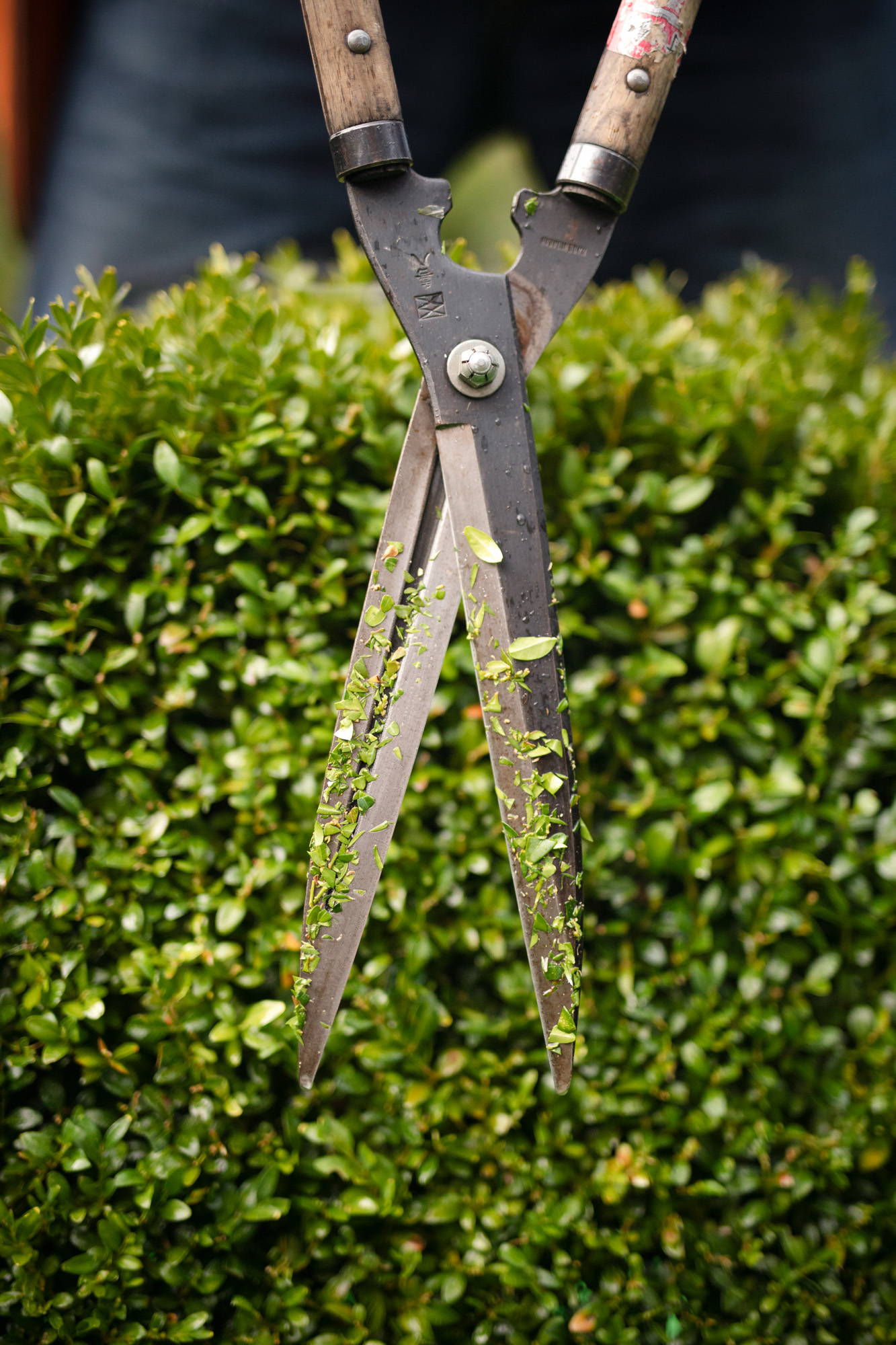
Pruning is your thing. What about it appeals to you?
I like the physical element of it. I like climbing up ladders and cutting things down and doing things. Though, it started from liking the effect; I saw in Japan what these trees looked like in these gardens and thought that’s amazing – I want to learn how to do that. So it began with an interest in the outcome; but the moment I started doing it, I became much more involved in more than just the outcome, and I started finding my own outcomes and learning how the plant responds.
In Japan, I worked in a tree nursery. My Japanese wasn’t very good, so there was a lot of learning through observing, copying, doing and making mistakes. Years later, when I came back to England, I worked at this amazing garden centre called Architectural Plants in Sussex, and my job was to add character and value to the plants. And that’s where pruning came in. I used the skills I picked up in Japan and translated them in a very different way, carrying across the idea that with a pair of shears or secateurs, you can transform a plant.
So it’s about the process rather than the end result?
I love the process – I love doing it and being outside and working with nature. But I also love the end result. Doing it is satisfying, but so is living with what’s been achieved. When you’ve worked on something yourself, you draw a lot of pleasure from it. If I was to list my top five gardens, my own garden wouldn’t make the cut. But yet it’s the garden I get the most pleasure from, because I tend to it and I get to live with the result of that.

Could you talk about the process?
A lot of people imagine that topiary and pruning is about obsessive control over plants. I don’t think that at all. It’s about working with the plant and waiting to see what the plant is going to give you back. That may be the difference between Japanese gardening and English gardening. Formal topiary in the UK is very much about control – you have a plan and you stick to it and you try to make the plant work to your plan. But I think Japanese gardening, or at least my interpretation of it and what I’m interested in, understands that there are two of you involved in the plan, and one of you is the plant and one of you has the shears.
Every plant is different, and it’s about learning over time, because everything takes time – no matter whether you chop a branch supposedly rightly or wrongly, you may not understand why it was right or wrong until years later when you see the results. That’s gardening in general, because everything takes time to grow. But pruning in particular is a slow process. But I love it. It’s all about slowing down and being open to learning.
When I came back from Japan, I had a long list of plants I thought I should use because that’s what I’d seen in Japan. I was convinced that I should use these unusual and special plants from Japan. But they just don’t like it in England; they like it in Japan. Early on, I figured out that it’s more rewarding to use plants that already grow well here and do Japanese things to them. That’s my thing: to apply the approach and ideas and use what’s to hand and then work out the benefits and disadvantages. Some things have bigger leaves; some things grow in different ways; but don’t see that as a problem; take that as a creative opportunity. The Japanese may never have heard of the plant you are using, but so what, let’s see what we can do with it.
So is it like art?
Yeah, it’s definitely more art than gardening, depending on how you define art. It’s definitely a creative thing: learning to interpret your plant. Though, you could say the same thing with so much of gardening anyway. There’s a lot of creativity involved.


Japanese garden-tree training with pine.
Do you go back to Japan often?
Usually, I go back a couple of times a year – my wife is Japanese. Going back to Japan is always fun. There’s always something new to uncover that I’m amazed I’ve never noticed and appreciated before – something that's always been there but was never on my radar, like discovering an amazing garden down a side street of somewhere I’ve walked many times. Also, as your interests change, you interpret things differently. At one stage, it was the gardens that I found most interesting, but then that shifted into an interest in the gardeners, and now, I’m more interested in seeing the people who make the tools that the gardeners use – I spend more time looking at blacksmiths than I do gardens now.
Could you talk about this evolution of interest?
Year to year, our interests change naturally, and through setting up Niwaki, I became interested in the people who make the tools as much as the people who use the tools and the craftsmanship behind them. We’re always changing – it’s changing without discarding, having a bit of the old and a bit of the new.
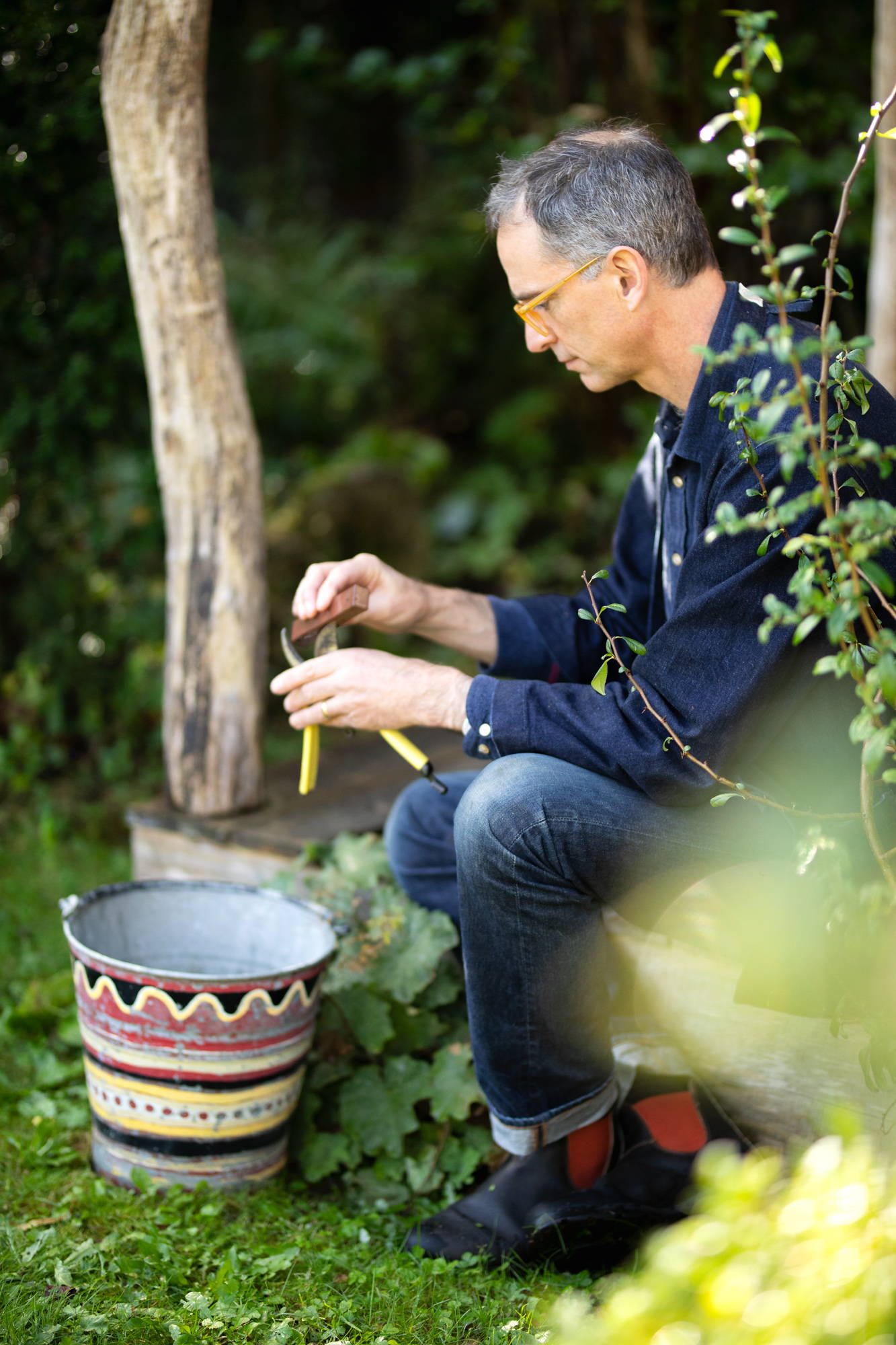

Are there any insights or takeaways you’d like to share from developing your approach to gardening and your time running Niwaki?
Something I’ve come to realise in life and business is nobody really knows what they are talking about – I certainly don’t. When you ask people for advice, all they can give you is their own experience – experience is everything, and yet, two people’s experiences will be completely different. Most people who have given me good advice have got to where they are not through knowing what they were doing but because they are good at finding their way. It’s lot to do with enthusiasm, determination, of course some good ideas, being honest, but also luck.
Interview by Rachel Taylor | Images by Jody Daunton
